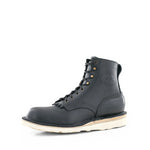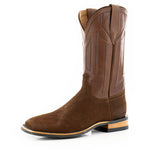Are Work Boots Supposed to Be Tight?
When it comes to work boots, finding the perfect fit is not just about comfort; it's about safety, performance, and ensuring long-lasting wear. A common question among individuals in professions that require sturdy footwear is, "Are work boots supposed to be tight?" This article aims to provide a comprehensive answer to help you make informed decisions about your work boots.

The Importance of the Right Fit
The right fit for work boots is crucial for several reasons. Firstly, a good fit ensures maximum comfort during long hours of wear. Secondly, it reduces the risk of foot injuries by providing proper support and stability. Lastly, it can enhance the durability of the boots, as evenly distributed pressure reduces wear and tear.
Understanding "Tightness" in Work Boots
When we talk about the fit of work boots, "tightness" can be misleading. Work boots should not be uncomfortably tight. Instead, they should snugly fit your feet, providing support without constricting movement or causing discomfort. Here's what to consider:
1. The Toe Box
The toe box should offer enough room for your toes to move freely without rubbing against the front or top. However, too much space can lead to a lack of stability and increased risk of blisters.
2. The Width
Work boots should fit snugly around the width of your feet. This means no excessive pressure on the sides of your feet but also no excessive room that your feet slide side to side.
3. The Heel
A small amount of heel slippage (about a quarter inch) is normal in new work boots. This should decrease as you break them in. However, too much slippage can indicate the boots are too large.
4. The Instep
The instep of the boot should hold your foot securely. If it's too tight, it can cause discomfort and affect circulation. If it's too loose, your foot may slide forward, causing your toes to press against the front of the boot.
Breaking In Your Work Boots
It's important to remember that work boots will often feel stiffer and more snug when they're new. Give them time to break in and mold to the shape of your feet. During this period, wear them for short durations and gradually increase wearing time.
Tips for Finding the Right Fit
- Measure Your Feet: Your foot size can change over time, so measure both feet and fit your boots to the larger foot.
- Consider Your Socks: Wear the type of socks you plan to wear with your boots when trying them on.
- Try Them On in the Afternoon: Feet tend to swell throughout the day, so trying on boots in the afternoon can give you a better fit.
- Walk Around: Spend some time walking in the boots to ensure they feel comfortable and provide the right support.
Conclusion
Work boots are not supposed to be tight in the sense of causing discomfort or restricting movement. They should fit snugly, providing support and stability without constricting the feet. Remember, the right fit is essential for comfort, safety, and the longevity of your boots. Take the time to find boots that fit well, and don't be afraid to spend a little extra for boots that meet your needs. Your feet, and your work performance, will thank you.





















Leave a comment